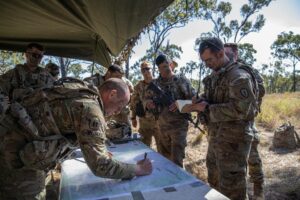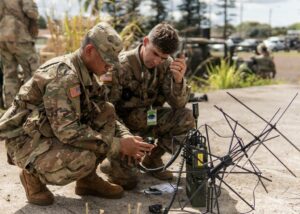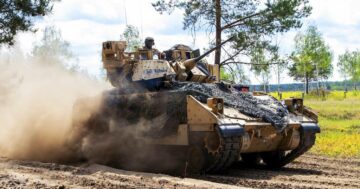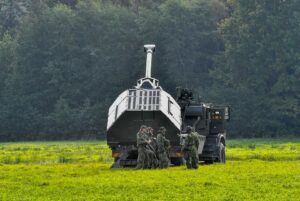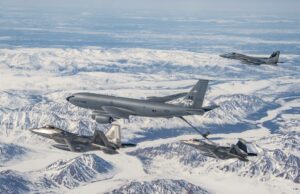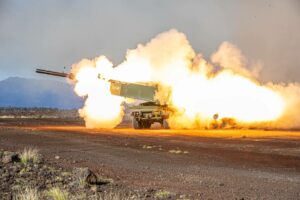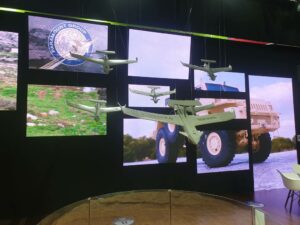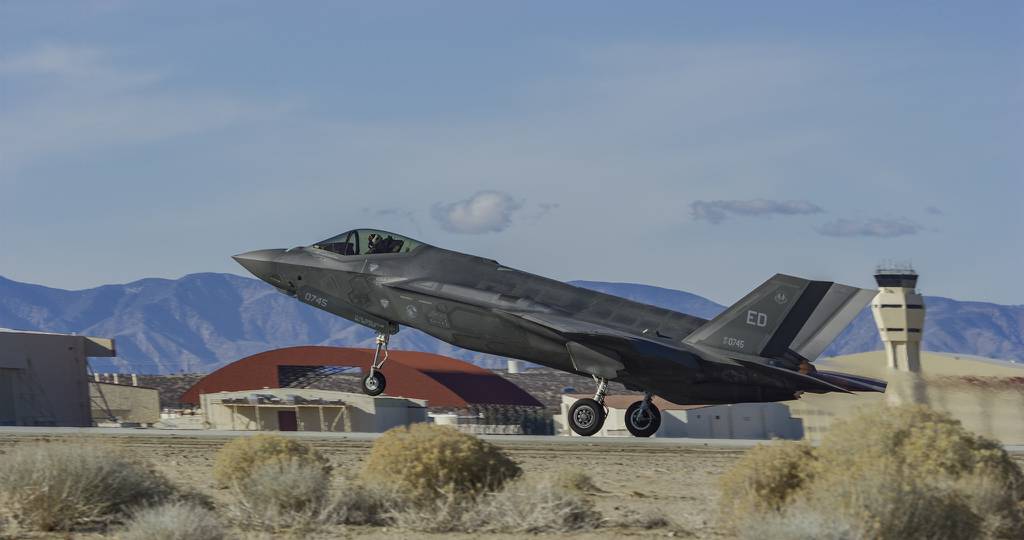
WASHINGTON — The F-35 Joint Strike Fighter is facing “significant challenges” on its future weapons and other capability upgrades that, if delayed, could lead to a production shutdown, the officer in charge of the program told lawmakers this week.
F-35 program executive officer Lt. Gen. Michael Schmidt said in written testimony to the House Armed Services subcommittee on tactical air and land forces that the upgrade known as Block 4 has had considerable issues related to the maturity of its hardware design, and timelines for integrating its software.
Block 4 upgrades — intended to allow the F-35 to carry more weapons, better recognize targets, and improve its electronic warfare capabilities, among other features — are also facing serious concurrency problems, Schmidt said in written testimony. Concurrency occurs when a system moves through development and into procurement at the same time, which makes it harder to fix problems discovered in testing.
“Development and production concurrency is Block 4′s most critical challenge, and we are dealing with its consequences today,” Schmidt said. “The F-35 [Joint Program Office], Lockheed Martin, and other industry partners have identified high risk concurrency in the F-35 Block 4 schedule, which would threaten to shut down aircraft production if development slips.”
In a statement to Defense News, Lockheed Martin said some Block 4 capabilities have already been delivered, starting in 2019, years ahead of schedule. Those already-delivered capabilities, which do not require TR-3 to work, include the F-35′s Automatic Ground Collision Avoidance System, or Auto GCAS, the Navy’s Joint Standoff Weapon variant known as C-1, and the ability to attack moving targets on the ground using laser-guided GBU-49 bombs.
Lockheed also said Block 4 hardware and software components are in different stages of development, and will be delivered incrementally as contracts are awarded and development on those elements is finished. In its response, Lockheed did not address Schmidt’s comments about a potential production shutdown if Block 4 development is further delayed.
The F-35 program is also struggling to field another series of improvements, known as Technology Refresh 3, that is a prerequisite for major portions of the Block 4 upgrades. Schmidt’s comments on Block 4 show that multiple F-35 modernization efforts are facing major headwinds, which could have ripple effects on the program for years.
Software problems have delayed TR-3, which was originally meant to be ready in April 2023, but now could be finished at least a year late. Schmidt said at Tuesday’s hearing slow production of some key parts for TR-3 has also held up the physical completion of some new jets at Lockheed Martin’s facility in Fort Worth, Texas. The government is not accepting newly built F-35s intended to have TR-3 installed, because it cannot carry out the necessary check flights.
Jon Ludwigson, director of contracting and national security acquisitions at the Government Accountability Office, said at the hearing the F-35 program’s plans for Block 4 have grown over the years as requirements for the jet have evolved. Block 4′s expected costs have also grown, and it has slipped behind schedule, he said.
Block 4 was originally meant to add 66 new capabilities at a cost of $10.6 billion by 2026, Ludwigson said. That has swelled to 80 capabilities costing $16.5 billion, he said, and now isn’t expected to be done until 2029.
Ludwigson acknowledged software development is hard, but also pinned some of the problems with Block 4 on the program not setting realistic expectations on how long it would take to develop the upgrades.
“Some of the challenges that have emerged [with Block 4] is because they didn’t have requirements, they didn’t necessarily have a firm sense of what was technically achievable,” Ludwigson said. “They didn’t have a strong basis for understanding how long these things were going to take. It became a bit of a journey of discovery and took time for them to figure out.”
Schmidt said the program is focused on eliminating the concurrency problems and setting a realistic delivery schedule.
Bill LaPlante, undersecretary of defense for acquisition and sustainment, ordered a technical baseline review on Block 4′s development earlier this year, Schmidt said. And experts from the Navy and Air Force have been evaluating Block 4′s development schedule, hardware maturity, program risks, software tools, and the skills in the government and industry workforces.
The Pentagon also awarded a contract on Block 4 earlier this year that focuses on reducing the risks of concurrency, he said, including setting milestones for carrying out a thorough review of Block 4′s hardware and software readiness to be folded into future production lots of F-35s.
Schmidt also said the program needs nine flight sciences aircraft, or F-35s specially configured to test and evaluate modernizations such as Block 4. The program now has the resources to convert three production F-35s into the test jets it needs, Schmidt said. But it needs to convert six more to meet its requirements, and that will require congressional authorization.
“The F-35 program must make investments in flight sciences aircraft and software labs at Lockheed Martin and throughout supplier locations to get the most operational capability out of the F-35 weapons system,” Schmidt said.
Stephen Losey is the air warfare reporter for Defense News. He previously covered leadership and personnel issues at Air Force Times, and the Pentagon, special operations and air warfare at Military.com. He has traveled to the Middle East to cover U.S. Air Force operations.
- SEO Powered Content & PR Distribution. Get Amplified Today.
- PlatoData.Network Vertical Generative Ai. Empower Yourself. Access Here.
- PlatoAiStream. Web3 Intelligence. Knowledge Amplified. Access Here.
- PlatoESG. Carbon, CleanTech, Energy, Environment, Solar, Waste Management. Access Here.
- PlatoHealth. Biotech and Clinical Trials Intelligence. Access Here.
- Source: https://www.defensenews.com/air/2023/12/15/f-35-head-warns-future-upgrades-at-risk-production-shutdown-possible/
- :has
- :is
- :not
- $UP
- 10
- 2019
- 2023
- 2026
- 66
- 70
- 80
- a
- ability
- About
- accepting
- accountability
- achievable
- acknowledged
- acquisition
- acquisitions
- add
- address
- ahead
- AIR
- Air Force
- aircraft
- allow
- already
- also
- among
- and
- Another
- April
- ARE
- armed
- AS
- At
- attack
- authorization
- auto
- Automatic
- awarded
- Baseline
- basis
- BE
- became
- because
- been
- behind
- Better
- Billion
- Bit
- Block
- built
- but
- by
- cannot
- capabilities
- capability
- carry
- carrying
- challenge
- challenges
- charge
- check
- collision
- COM
- comments
- completion
- components
- configured
- Congressional
- Consequences
- considerable
- contract
- contracting
- contracts
- convert
- Cost
- Costs
- could
- cover
- covered
- critical
- dealing
- Defense
- Delayed
- delivered
- delivery
- Design
- develop
- Development
- DID
- different
- Director
- discovered
- discovery
- do
- done
- down
- Earlier
- East
- effects
- efforts
- Electronic
- elements
- eliminating
- emerged
- evaluate
- evaluating
- evolved
- executive
- Executive Officer
- expectations
- expected
- experts
- Facility
- facing
- Features
- field
- Figure
- Firm
- Fix
- flight
- Flights
- focused
- focuses
- For
- Force
- Forces
- Fort
- from
- further
- future
- future weapons
- Gen
- get
- going
- Government
- Government Accountability Office
- Ground
- grown
- had
- Hard
- harder
- Hardware
- Have
- he
- head
- headwinds
- hearing
- Held
- High
- House
- How
- HTTPS
- identified
- if
- images
- improve
- improvements
- in
- include
- Including
- industry
- industry partners
- Integrating
- intended
- into
- Investments
- issues
- IT
- ITS
- Jets
- joint
- journey
- jpg
- Key
- known
- Labs
- Land
- Late
- lawmakers
- lead
- Leadership
- least
- locations
- Lockheed Martin
- Long
- lots
- major
- make
- MAKES
- Martin
- maturity
- meant
- Meet
- Michael
- Middle
- Middle East
- Milestones
- Military
- modernization
- more
- most
- moves
- moving
- multiple
- must
- National
- national security
- necessarily
- necessary
- needs
- New
- newly
- news
- nine
- now
- of
- Office
- Officer
- on
- operational
- Operations
- or
- originally
- Other
- out
- over
- partners
- parts
- pentagon
- Personnel
- physical
- plans
- plato
- Plato Data Intelligence
- PlatoData
- possible
- potential
- previously
- problems
- procurement
- Production
- Program
- Readiness
- ready
- realistic
- recognize
- reducing
- related
- reporter
- require
- Requirements
- Resources
- response
- review
- Ripple
- Risk
- risks
- s
- Said
- same
- schedule
- SCIENCES
- security
- sense
- Series
- Services
- setting
- show
- shut
- Shut down
- shutdown
- SIX
- skills
- slow
- Software
- software components
- software development
- some
- special
- specially
- stages
- Starting
- Statement
- strike
- strong
- Struggling
- subcommittee
- such
- supplier
- system
- tactical
- Take
- targets
- Technical
- technically
- Technology
- test
- testimony
- Testing
- texas
- that
- The
- The Block
- Them
- These
- they
- things
- this
- this week
- this year
- those
- threaten
- three
- Through
- throughout
- time
- timelines
- times
- to
- today
- told
- took
- tools
- traveled
- u.s.
- U.S. Air Force
- understanding
- until
- upgrades
- using
- Variant
- Warns
- was
- we
- Weapons
- week
- were
- What
- when
- which
- will
- with
- Work
- worth
- would
- written
- year
- years
- zephyrnet


